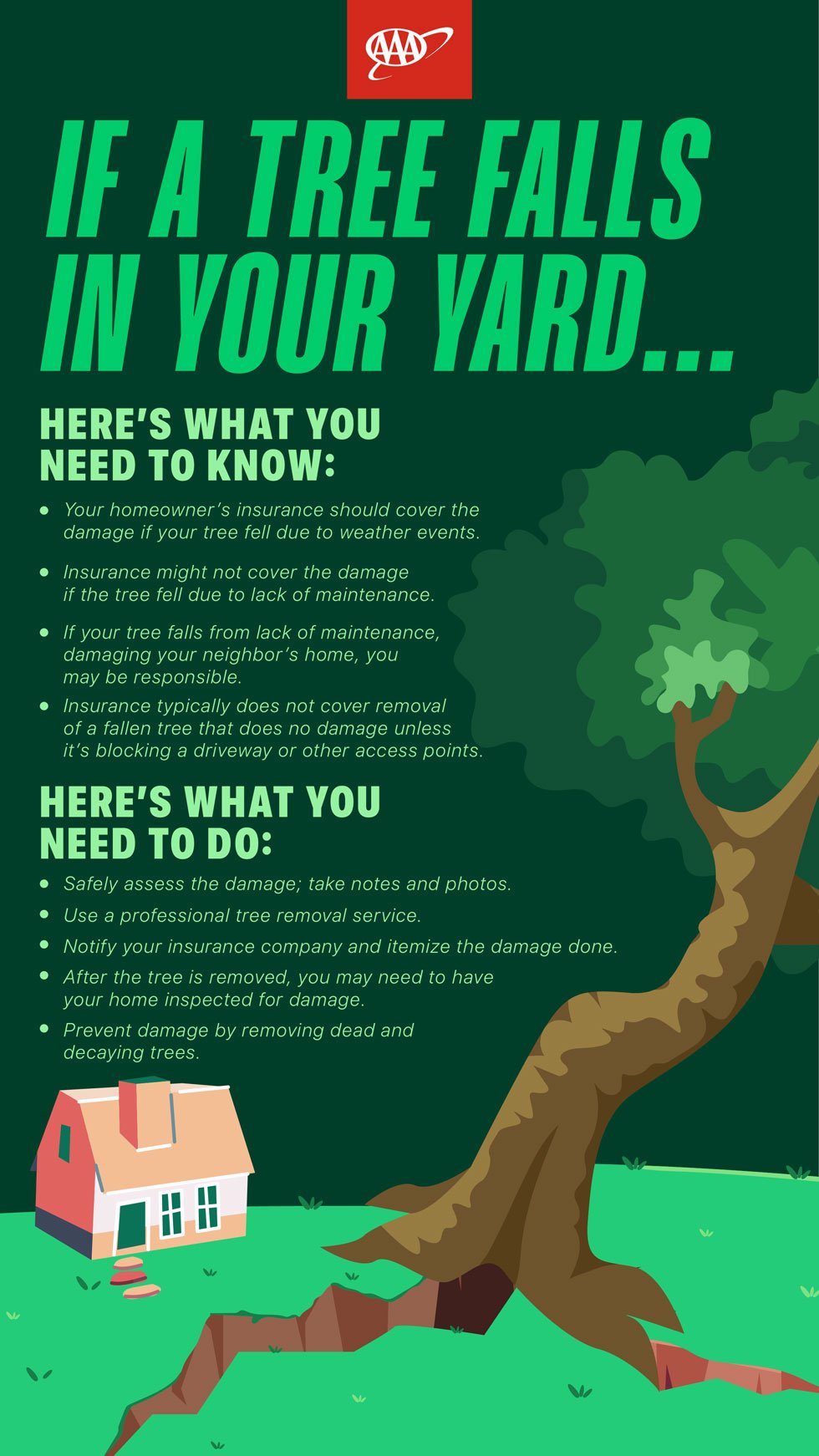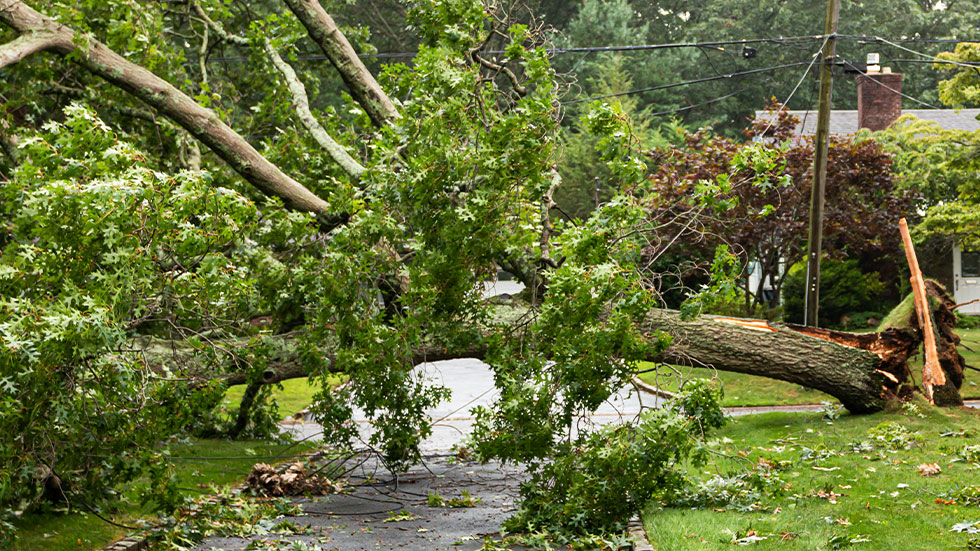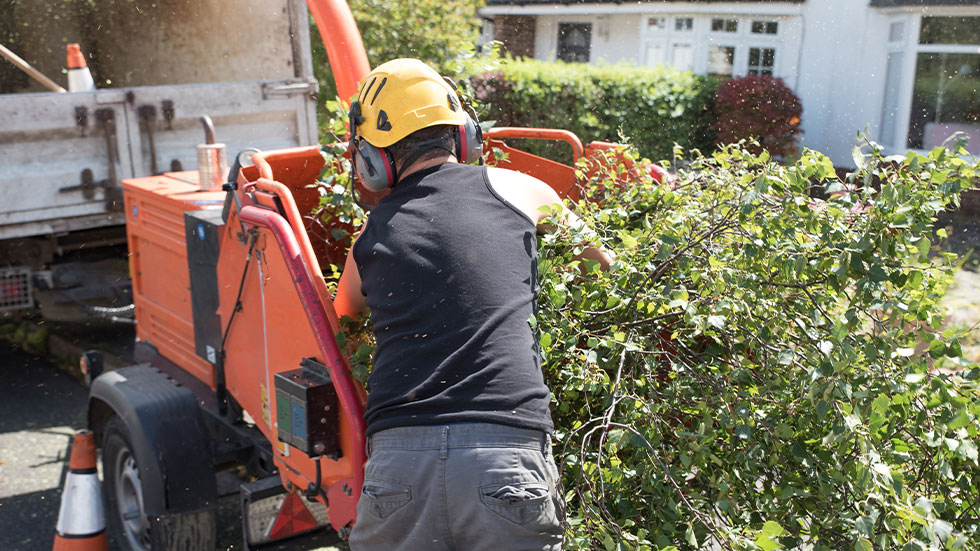
Sometimes all it takes is one storm or gust of wind to topple a tree, and when it comes down, it could cause serious damage. You may wonder if your homeowner’s insurance will help pay for the damage or cost of removing the fallen tree, and then wonder what to do about it.
Homeowner’s insurance coverage for fallen trees typically depends on several factors, such as what caused the tree to fall and what kind of damage resulted. Talk to your insurance agent today to learn more about your policy and coverage. And, read on to learn more.

Does my homeowner’s insurance cover tree damage to my home?
Whether your homeowner’s insurance will cover damage caused by a fallen tree depends on several factors. Typically, homeowner's insurance will protect your home and structures (like a shed) against specific causes of loss, including damage caused by wind. So, if the tree was otherwise healthy and caused damage because of wind, your policy may help pay to repair damage to your home.
However, if the tree was rotting and ready to fall anyway, repairs likely won’t be covered. Homeowner's insurance usually won’t cover loss or damage caused by maintenance-related issues or negligence.
What if a neighbor’s tree fell on my property?
If your home is damaged by your neighbor’s tree due to wind, homeowner’s insurance may help to pay to repair the damage to your house. Whether you have to file a claim or your neighbor’s insurance will cover the damage depends on what caused the tree to fall and other factors.

Does my homeowner’s insurance cover tree damage to my neighbor’s home?
Typically, you’re only considered responsible for damages to your neighbor’s property if neglect on your part was a contributing factor to the tree falling. For example, if the tree is on your property and was dead and you did not remove it, and it causes damage, you’ll likely be responsible for damages. However, if it was a perfectly healthy tree, your neighbor will likely have to file a claim through their own insurance.
Does homeowner's insurance cover tree removal?
If the tree falls and causes no damage, your policy likely won’t cover fallen tree removal. However, if it does become an obstacle for drivers, like if it blocks your driveway, the cost of removal may be covered. Additionally, if the tree damaged your home, your policy may help cover the cost of removing the branches.

If a tree falls in your yard:
Assess the damage
As soon as a tree falls, take careful notes and photos of the situation. Do this from a distance in case the tree hit a power line or caused other dangerous damage. If there’s damage to your home, you should evacuate. If there’s no apparent damage to your home, take photos of the damage but don’t get any closer than you need to.
Call a professional tree removal service
As soon as the tree falls, you should let a professional tree removal service know. They may not be able to respond to you right away but placing the call will get you on their list. Tell them what damage you can see, where and how big the tree is.
Notify your insurance company
Tell them what happened, what has been damaged, and where you are. Be as descriptive as possible. If you can, itemize your damaged belongings, such as a fence, shed, car, or your home. You may be able to file a claim online or you may have to call. You may also be asked to share photos of the damage, so do so as soon as possible.
Secure your home
If the tree damaged your home, go to a neighbor’s house, your car, or other area. Lock your doors and windows before leaving and secure all valuables. If it’s safe, place boards or solid objects over holes in your wall or broken windows to prevent animals and water from getting into your home. You should never try to remove the tree itself as it could have damaged the integrity of your home or knocked down a power line.
Get the tree removed and repair the damage
After the tree has been safely removed, you may want to call in a home or other inspector to look at the foundation and other damage. You may have to work with a construction company or contractor to make repairs to your foundation, walls, windows, or other damaged areas. Do this as soon as possible to prevent further damage to your home.
Prevent damage in the future
Remove dead or decaying trees from your property and hire a professional tree trimming service to remove any extended branches. Consider reinforcing your walls and roof with items like stones, plywood boards, or metal grids. Remove fragile objects from your walls. And, prepare an evacuation plan in the event your home ever gets damaged again.

